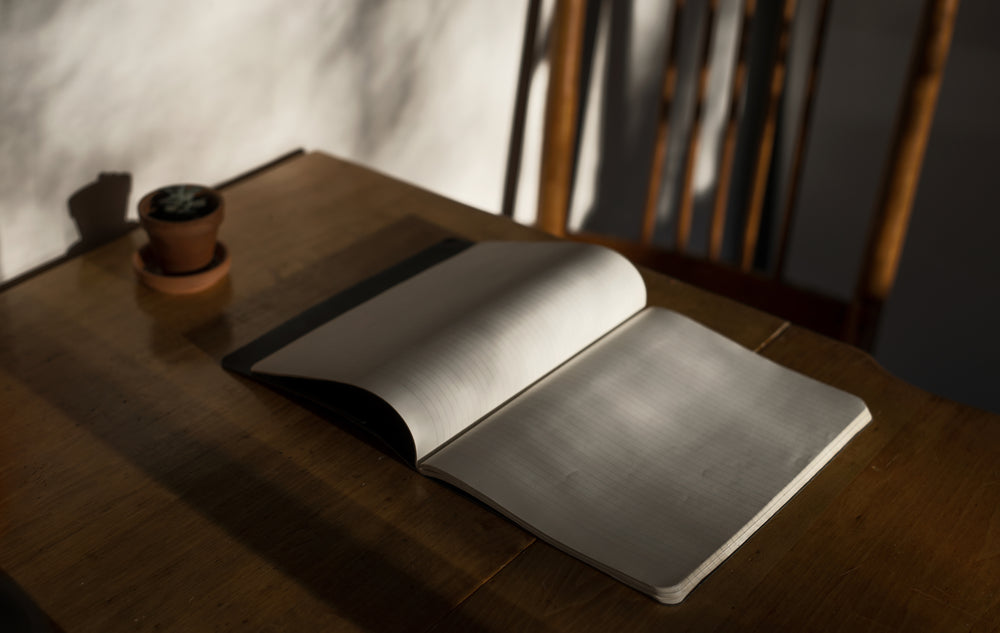5 Underrated Ways to Use Your Dot Grid Notebook
When I first got my 160gsm dot grid notebook, I thought it was just for bullet journaling. Spoiler: I was so wrong. That tiny grid pattern? It’s basically a blank canvas with built-in guidelines, and the thick 160gsm paper? It handles everything (looking at you, my leaky gel pens).
After messing around with it for a few months, I found 5 冷门 (underrated) uses that turned this notebook into my daily sidekick. No fancy skills needed—just your notebook and a pen. Let’s dive in!
1. Time Blocking Tracker (No More “Where Did My Day Go?”)
I used to rely on phone apps for time blocking, but nothing beats scribbling it down—you’re way more likely to stick to a plan you physically write.
Here’s how I do it:
- Draw a vertical line down the middle of the page (the dots make straight lines so easy—no ruler needed!).
- Left side: List time slots (e.g., 9-10 AM, 10-12 PM) in 30/60-minute chunks.
- Right side: Jot down tasks for each slot (e.g., “Edit blog post,” “Grocery run”).
✨ Pro tip: Use different colored pens for work vs. personal tasks. And since it’s 160gsm paper, the ink won’t bleed through—no more messy smudges on the next page!
2. Mind Map for “Chaotic Ideas”
Ever had a brain full of random thoughts (e.g., “Plan birthday party”) and no clue how to organize them? A dot grid notebook is perfect for mind maps—way more flexible than a pre-printed one.
My go-to setup:
- Write the main idea in the center (e.g., “Mia’s Birthday”).
- Draw lines from the center to 3-4 main categories (e.g., “Venue,” “Food,” “Guests”).
- Add sub-points to each category (e.g., under “Food”: “Vegan cake,” “Finger sandwiches”).
The dots help keep the lines straight, but you can still curve them if you want—no rigid boxes here! And if you mess up? Just cross it out—160gsm paper is thick enough that the correction doesn’t show through.
3. Habit Tracker (That Actually Works)
I’ve tried digital habit trackers, but they feel… impersonal. With a dot grid notebook, you can make a tracker that fits your habits—no more forcing yourself into a one-size-fits-all app.
How I build mine:
- Top of the page: Write the month (e.g., “October 2024”).
- Left side: List habits (e.g., “Drink 8 cups of water,” “Read 20 mins”).
- Top row: Number the days of the month (1-31).
- Each day: Color in a dot (or small square) next to the habit if you did it.
The 160gsm paper holds up to markers, too—if you want to use a highlighter to mark “perfect weeks,” it won’t seep through to the back.
4. Budget Log (For “Oh, I Spent That Much?” Moments)
Budgeting doesn’t have to be boring—promise. I use my dot grid notebook to track daily spending, and the dots help keep everything neat (no more scribbling numbers all over the page).
My simple log:
- Column 1 (left): Date (e.g., 10/5).
- Column 2: What I bought (e.g., “Coffee + pastry”).
- Column 3: Amount (e.g., $6.50).
- Bottom of the page: Total for the week.
I even add little icons next to each purchase (a coffee cup, a shirt) to make it less “adulting” and more fun. And since the paper is thick, I can erase a typo (we’ve all done it) without tearing the page.
5. Recipe Journal (No More Lost TikTok Recipes)
I’m guilty of saving 100 TikTok recipes and then forgetting where they are. Now, I write my favorites in my dot grid notebook—with notes on what I changed (e.g., “Add more garlic!”).
How I format it:
- Top: Recipe name (e.g., “Creamy Tomato Pasta”).
- Left side: Ingredients (list with checkboxes—so I don’t miss anything at the store).
- Right side: Steps (numbered, with small dots for tips).
The best part? I can draw little “before/after” sketches (e.g., a messy pasta pot vs. a plated dish) next to the steps. The 160gsm paper takes pencil sketches and pen writing without smudging—total win.
Wrapping Up
The best part about a 160gsm dot grid notebook is that it doesn’t limit you—you can use it for anything, even the “weird” or “unplanned” stuff. These 5 uses are just the start—once you play around with the dots, you’ll probably find your own favorite way to use it.




Leave a comment